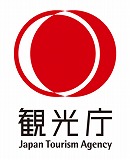最終更新日:2022年8月1日

Near the peak of Mt. Haku are seven crater pools that have, like the mountain itself, been sites of religious worship since medieval times. Buddhist ascetics practicing spiritual discipline by spending extended periods of time on the slopes of Mt. Haku would pass by these pools on their way to the summit, and rounding all seven was considered a sort of miniature pilgrimage. The largest of the seven pools is Midorigaike (“green pond”), which was formed by an eruption in 1042. The pond gets its name from its emerald-green water, which is colored by hot-spring minerals that seep up from below. In medieval times, those who worshiped Mt. Haku often depicted the mountain and its surroundings in the form of mandalas, or visual representations of Buddhist cosmology. In these, Midorigaike appears as a dwelling of the mountain deity, which true believers might witness emerging from the water. What is more, legend had it that drinking this water would extend one’s life span.
この英文解説は、2021年観光庁「地域観光資源の多言語解説整備支援事業」により整備しています。
This English description is provided by the "Multilingual Commentary Project 2021" of Japan Tourism Agency.

Description
| Name |
Midorigaike Pond
|
| Type |
Shirakawa Village Designated Natural Monument
|
| Date |
Designated on March 30, 2017 |
* Please note that the above information is provided for reference. There may be cases where it differs from current information.